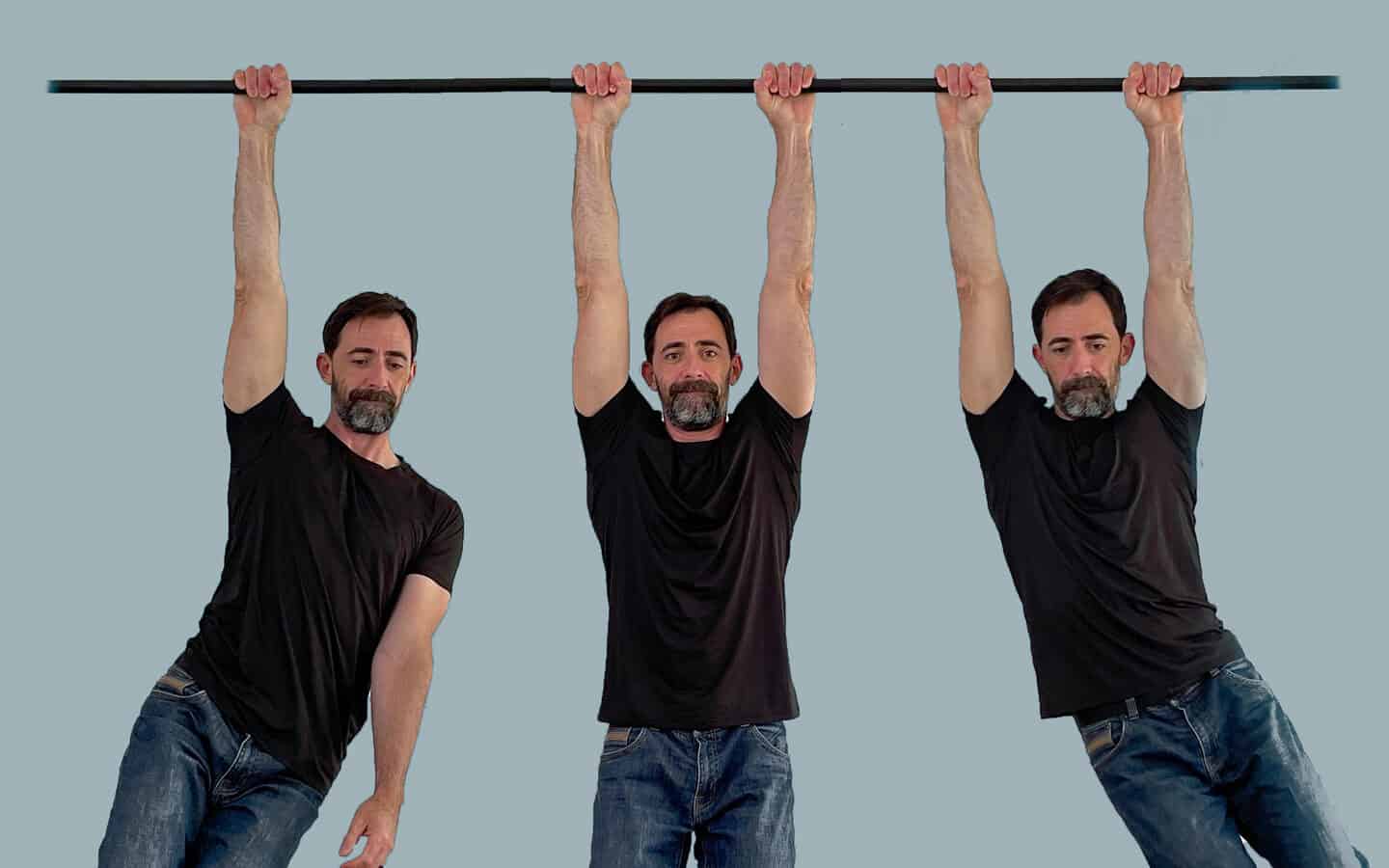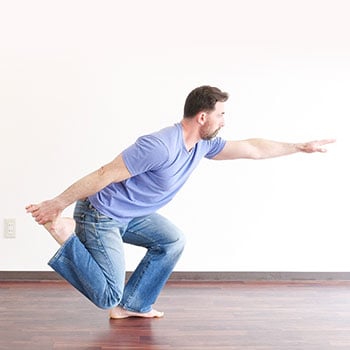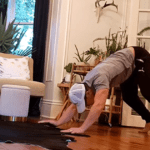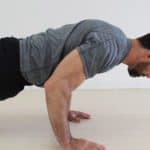It’s true: regularly spending a few seconds hanging from a bar can make you taller and more attractive reduce shoulder pain and stiffness while relaxing your spine and giving you a stronger grip.
Of all the infinite variety of exercises and mobility gadgets and secret protocols out there, the most effective solutions are often those hiding in plain sight.
Hanging is one of these.
It’s simple. It’s easy. And it can actually work!
But in a world where everyone and their brother is making crazy health claims on the internet, maybe we should start by defining what hanging works for…
What we’ll cover in this article:
Hanging Benefits | Anatomical Concepts | Hanging Exercises Video | Exercise Breakdown | Risks of Hanging | Training Safely | Full-Body Strength
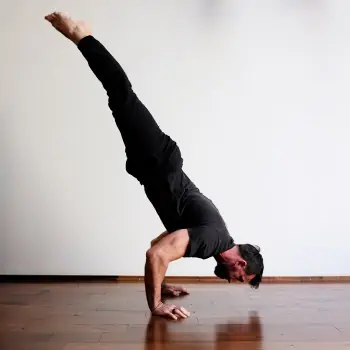
Get 16 Proven Strength Tutorials
We’ll send you our best methods and progressions for building practical strength, yours free.
Real-World Benefits from Hanging
Right out of the gate, I want make one thing perfectly clear: hanging feels good.
But if the promise of frequent stretchgasms isn’t enough reason for you to buy a pull-up bar and start doing this daily, you’ll be pleased to know that there’s also some very rational excuses you can mention when people in your family ask you why you spend so much time just hanging out.
If you believe everything you read in the Instagram comments, hanging is responsible for curing asthma, cancer, and radiation burns. Please take fantastical claims with a grain of salt. Especially from anonymous internet commenters.
Hanging is great or we wouldn’t be telling you about it, but the actual benefits are more practical:
Stronger, Mobile Shoulders

Ryan does a lot of hanging to counter the damage from years of Judo competition.
We cover more of the shoulder anatomy here, but the most important thing to understand is that passive hanging applies an unusual force to the muscles and ligaments of the shoulder in an unusual direction… and this can be a very good thing!
Hanging can also build strength in the shoulders, back, and core. By supporting and pulling your weight, you engage these muscles in ways that aren’t exercised in common daily activities.
Stronger, Longer-Lasting Grip
In addition to just being useful for opening pickle jars, grip strength has a high correlation with longevity and quality of life in later years.
I mean, who wants to live to 100 if you can’t open your own pickles?
Supporting your full bodyweight with your hand strength along may be difficult at first, but we’ll show you several exercises you can use to gradually build the strength and endurance of your grip.
This is something most people don’t train seriously, so it provides some tangible benefits as your grip improves.
Healthy, Relaxed Spinal Column and Better Posture
Hanging provides traction and unloading all through the body, but especially at upper and mid thoracic spine.
Think of a line across the back of your shoulders right to your spine. That area will will receive the traction force from hanging from your hands, with the weight of the rest of your body pulling you down, and this can help balance the daily compressive forces we experience.
More about how this works in the next section.
Basic Anatomy of Hanging: Spinal Compression and Traction
The main thing to know here is that bones, ligaments, and tendons require both traction and compression for stimulation and adaptation. These forces encourage proper nutrition and function. Too little and too much of either aren’t good.
Compression doesn’t have to be something pushing down on you or having a weight on your back. Compression also happens when you sit and the weight of your upper body bears down on the joints you are sitting on.

Despite having co-authored a book on improving posture, Jarlo often slouches when he sits, which puts his spine into compression.
If you spend a lot of time working at a computer, your back is probably rounded and your shoulders and head are forward when you type. That puts your spine under compression, particularly the junction between your neck and upper back and your lower back.
Hanging is one way to counter all that daily compression by spending some time with those same joints in traction.
Traction is the opposite of the compressive force – whatever way you can “open up” spaces between areas. Grab a sturdy fixed object and lean back and you are providing traction in all the spaces between your hand and your center of gravity. Grabbing a bar to hang creates spinal traction that’s essentially the opposite of the force of gravity.
And yes, it really can be just that easy, but we’ll show you a few different ways to also make it interesting 🙂
Easy, Fun Hanging Exercises to Try
I’ll add some notes about each of those hanging exercise variations below, but first a couple of general points to cover…
Grip: How to Hold On When Hanging
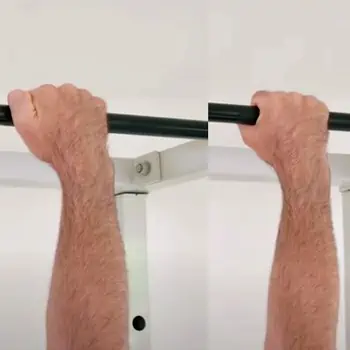 When hanging from a bar, you have two options. Choose whichever of these feels best:
When hanging from a bar, you have two options. Choose whichever of these feels best:
- Standard grip with thumb wrapped around the bar
- Monkey or overhand grip with thumb over the bar
When hanging from gymnastic rings, don’t get cute:
- Wrap the thumb around the bar
- That’s it ☝️ No other options 😉
There are actually three different ways to grip gymnastic rings, but for our purposes here, the normal, wrapped grip makes the most sense.
Active vs Passive Hanging
In the video, you’ll see Ryan both passively and actively hanging on the rings.
- In a passive hang, you let gravity do its work, fully relaxing the shoulder, back, and core muscles.
- In an active hang, you’ll hold some tension in your arms and engage your back muscles to pull your shoulder blades down and maybe slightly back.
Both are valuable. Passive hangs with the shoulders elevated and extended are great for relaxation and opening your shoulders and spinal joints (traction). Active hangs teach you to use your shoulder musculature to control the scapular movements in different directions (retraction, protraction, and depression).
You don’t need to go crazy trying to turn this into a technical skill. It’s enough to practice moving in and out of tension here, engaging and relaxing the back and shoulders.

Put aside for a second how creepy it would be to see two of Ryan hanging from a bar in real life. On the left, a relaxed passive hang. On the right, lats engaged for an active hang.
Hanging Exercise Explanations and Tips
The possibilities for incorporating hanging and brachiation (swinging/traversing) exercises into your workout or daily routine are just about limitless. Once you build up enough grip strength to hold onto the bar a while, you can do all sorts of fun things 🙂
Here’s a list of the exercises in the video with some additional details to keep in mind for each:
Passive Hang with Assistance
Keep feet on the floor or a bench, ladder, etc. If you’re tall, just bend your knees and keep toes on the floor.
This lets you support a portion of your weight with your legs while your shoulders get used to supporting you in this position. Read the section on risks below for more explanation, but you don’t want to just jump (literally or figuratively) into this. Ease into this, and your body will adapt over time.
Start with assisted hangs, working up to 20 to 30 second holds.
Active Hang with Assistance
Still using your legs a bit, but now engaging some of the shoulder and back muscles. Focus on keeping arms straight. It helps to think about pulling the chest up instead of pulling down with the arms.
Passive Hang with Feet Off the Floor
After you’ve gotten used to hanging a bit and have enough grip strength, you can practice without any assistance.
Just as with the assisted hangs, you’re going to add time gradually.
Active Hang with Feet Off the Floor
We often recommend this “pulling prep” for learning to activate you lats and upper back in pull-ups.
Swinging Side to Side
This is where you start to learn about selective tension since the grip tension changes as you swing, giving a little break to one hand as you move. Since you relax your grip going side to side you are often able to stay up there longer.
Swinging Forward and Backward
Thumb around the bar might be the best grip in the beginning when practicing this since it will give you a firmer hold on the bar.
Note: be sure you’re using a solid structure that will not tip or fall.
Single Arm Hang with Assistance
Same as above with the assistance. Once hanging with both arms feels comfortable and somewhat easy, you can work on single-arm hangs.
It’s easy to underestimate what a difference this makes in terms of strain on your joints and connective tissue, so we recommend using assistance at first, even if you feel like you’re “strong enough.” Get gradual in adding load to your joints.
Single Arm Hang Feet Off the Ground
Once you bring your feet off of the ground you’ll probably find that you’ll turn/twist, and that’s normal. One side is going to be weaker than the other, which is also normal.
Remember: imbalances won’t kill you.
Relaxed Grip Option for Single Arm Hang Practice
Start with both hands on bar but relax the grip of one hand. Work to relax the fingers going down from four, three, two, and finally one finger to improve the grip of the other hand. Then switch sides.
Single Arm Swings Side to Side
This is where you swing side to side similar to how you did with both hands on the bar. However, in this variation you will take one arm off of the bar, swing, then grasp with the other hand and continue the swing.
You can also do this with toes on the floor first in order to get a feel for the movement.
Traversing
If you’re working on a bar you will swing side to side switching hands as you laterally work across the bar.
You can also do this with toes on the floor first in order to get a feel for the movement.
What to Hang From
It’s 2022, and there are still ostensible adults who post questions like this one the internet:
but, but, what if i don’t have anything to hang from?
I’m gonna save us both some time and just point you to the exact pull-up bar I bought for under $25 at the start of the pandemic.
You’re welcome.
If you click that link and come back to me with some BS about how your home doesn’t have doors or something, we are no longer friends.
I could fill up this space with a bunch of ideas about finding a tree branch or something, but honestly, if you’re not ready to take responsibility for buying yourself a pull-up bar, you’re probably not gonna actually follow any of this advice anyway.
Don’t be a weeny.
We are grown-ass adults. You can make it work.
How to Practice Hanging for Grip Strength and Shoulder Health Benefits
There is no magic number of minutes in terms of daily hang time that you need. Do what feels right and just be consistent with it. Try to do it at least 3 days a week, and this is one of a very few exercises that we actually recommend you do every day if you can.
For sets and reps, it depends on what other moves you’re doing, how much you weigh, how strong you are, and if you have any prior injuries.
Rather than reps, focus more on the duration of the hang. Start with 5 to 20 seconds for each hang variation and then gradually add 5 seconds to it. Work up to being able to hang for 30 to 60 seconds for each variation. When you can do 30 seconds, you might try a more challenging variation.
Important: These are not “progressions”, in the sense that you goal is to graduate to higher level hangs. Just do what’s comfortable and somewhat challenging.
For sets, just one is fine. You can then work up to doing as many as you feel like or have time for.
Here’s how Ryan uses hanging in his regular routine:
Nowadays I only do a single set each morning as the first thing in my morning mobility routine. It’s a great way to start off the day and depending on how I feel I’ll change up what hang I do that day. I don’t count how long I’m hanging anymore and I just hang until I feel like I’m done. So it could be anywhere between 10 to 60 seconds each day. I know that sounds super random, but the important thing for me is just doing it every single day.
He also drinks his morning coffee while hanging, which… isn’t normal.
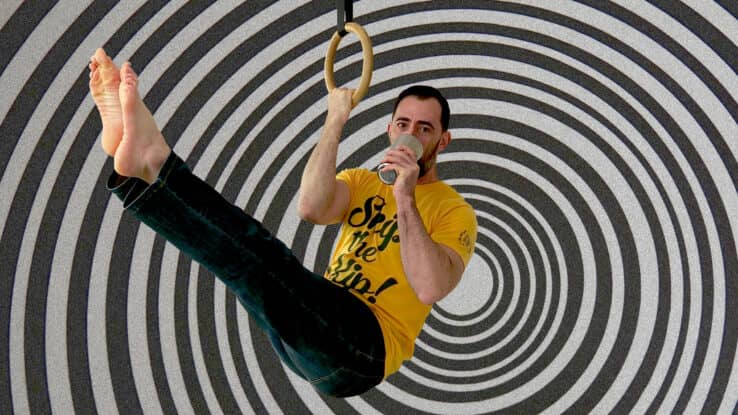
Not really
Personally, I have have a bar hanging in my office / daughter’s playroom, and I like to hang from it for a unspecified number of seconds, here and there, randomly throughout the day. It’s a nice break from work and feels good when I’ve been sitting like Jarlo for too long.
If you also spend too much time staring into the black abyss of a desktop computer, you should try this routine you can do at your desk.
Some Caveats and Risks of Hanging
The biggest “risk” of incorporating hanging as a regular part of your routine is that it’s easy to fall prey to “more is better” trap. Especially since hanging feels so gooooooood.
But a little goes a long way here, and too much can lead to overstretching your ligaments and muscles, which could cause a protective reaction from the body. Muscle spasming and pain from too long and too intense of a hang are some side effects. You may have seen inversion tables and contraptions where you hang from your ankles. A lot of people had the unpleasant discovery that more is indeed not better when they found themselves on the floor unable to get up again.
The same caveats of overstretching muscles, tendons, and ligaments when you aren’t used to it in other exercises readily apply here.
You’ll see a fair amount of advice to do these for shoulder health, but if you are already dealing with shoulder impingement and/or difficulty reaching overhead, be wary of overdoing this and exacerbating your condition
Safe Training of Passive Hanging
Hanging is generally safe, as long as you aren’t hanging off the side of a bridge or something. And of course, you need to make sure to have a sturdy support before jumping up and trusting it with your full bodyweight.
Here’s some less obvious tips to make your training enjoyable and effective:
- Start with your weight supported rather than jumping to your full bodyweight hanging. See the “assisted” versions of each exercise above.
- Even as you get acclimated, set yourself up so that you can easily use a support to stop the exercise rather than just dropping down.
- Try different angles rather than simply “straight down”. This goes hand in hand with starting with your weight supported. You can adjust your angles to find your current sweet spot for hangs.
Just remember to take it slow and steady. You won’t win a medal for this.
Take your time and keep going.
Dead Hangs are Just One Part of Your Full-Body Strength Development
If you just wanna loosen up your shoulders and counter some of the damage from desk work, it really can be just that simple:
- Grab something sturdy.
- Hang for a few seconds.
- Repeat.
If you’re already doing regular workouts to build your overall strength and mobility, add some passive hangs and see the difference for yourself after a few days.
And if you don’t have a structured plan for protecting your joints and keeping your body strong and pain-free, you’ll want to check out Integral Strength…
Simple Bodyweight Exercise for Full-Body Strength
Integral Strength is a systematic strength program you can do at home to build practical skills and strength that carry over into your most important daily activities.
